
Russian Pobeda on walls of Santiago
/ Главная / Russkiy Mir Foundation / Publications / Russian Pobeda on walls of SantiagoRussian Pobeda on walls of Santiago
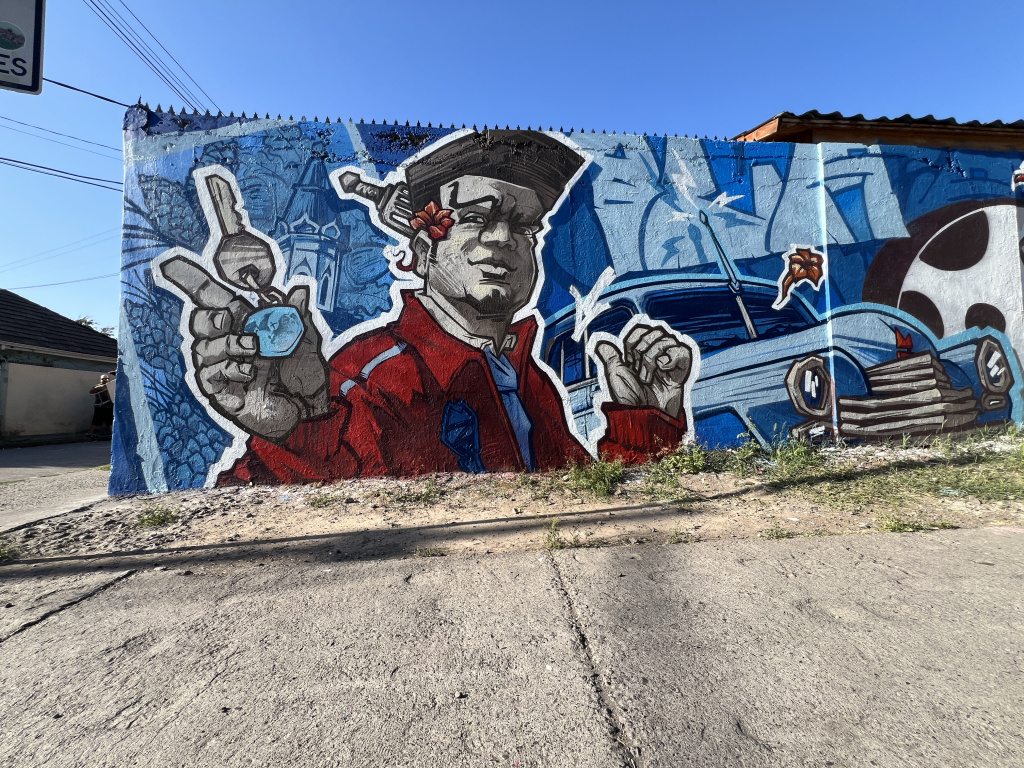
Photo credit: EffectGraff Creative Association
Russian graffiti artists from Moscow, St. Petersburg, Krasnoyarsk, and Nizhnevartovsk took part in an international street art festival in the capital of Chile. They decorated the walls of Santiago with Russian and Chilean symbols, conducted a master class for Russian compatriots, and discussed collaborative projects with colleagues from Latin America.
There is an idea, for instance, to invite the region's best artists to an international festival in Russia next year. "Graffiti is a wonderful communication tool enabling us to express ourselves, as well as get to know each other better," says Egor Gerasimov, an artist from St. Petersburg.
According to Nikita Pinchuk from Vladivostok, the artists met many locals at the walls where they self-expressed. He shared with Russky Mir that people passing by had saluted them and shown their admiration. Residents of neighboring countries used to feed the visitors from distant Russia with pirozhki.
Accommodation, food, and paint
“We continuously monitor festivals held in various places, and if one is appropriate for us, we apply," said Nikita. “We have painted in many countries before, including China and European countries. The social effect of our work is the basis for our activities, and it's very important to us where we do it and who we do it for. In fact, our pieces stay there for a long time. We wrote to the Chileans, and they answered us in Russian. It was really surprising. They provided feedback and appreciated our artwork.”
Having received an invitation to the International Daking Jam Festival 2023 in Chile, artists from the EffektGraff Creative Association, Russia, didn't hesitate. If they were invited, they should go. The organizers promised "accommodation, food and paints".
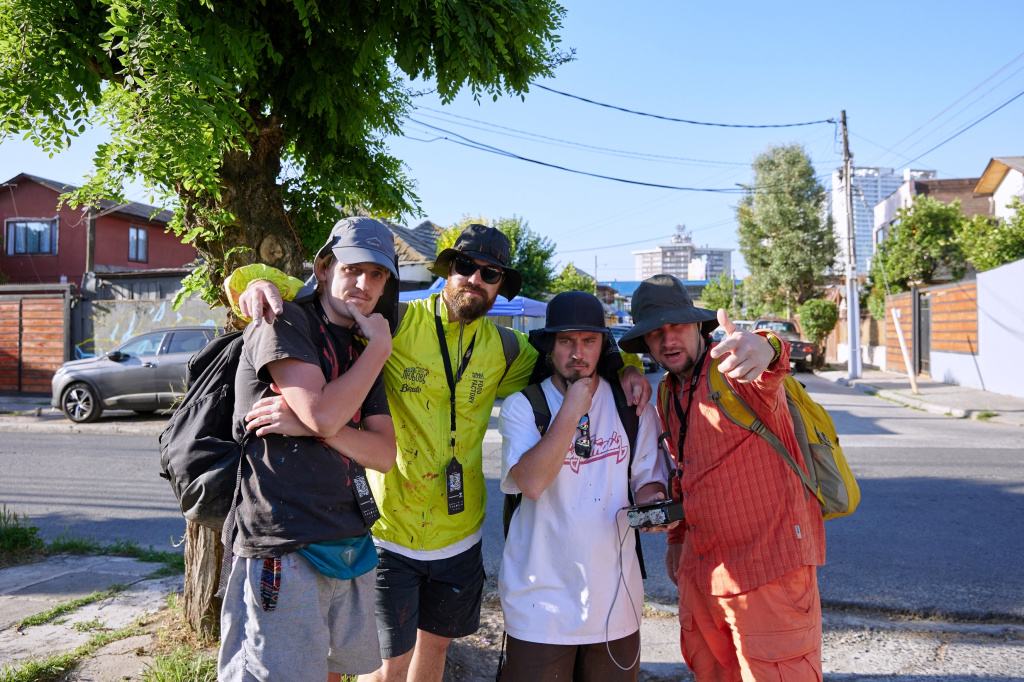
Photo credit: EffectGraff Creative Association
It took Russians two days to get to the other side of the world (Moscow - Qatar - Brazil - Chile) and more than a hundred thousand rubles for tickets and visas. They used their personal funds and got support from the regions where they live and create. The festival brought together about 180 taggers from Europe, Africa, South and North America. There were participants and teams from Chile, Bolivia, Colombia, Costa Rica, Brazil, Mexico, Peru, Sweden, Germany, the USA, Morocco, Italy, Finland, and other countries of the world.
“Our trip was a milestone in some ways," said Nikita Pinchuk. "Fewer Russian artists have participated in international events in the last couple of years. This is due to the abolition of Russian culture and broken logistics. We took advantage of an opportunity opened. We packed up, traveled, performed our art, and networked. Artists from other countries treated us with warmth and interest, we are colleagues and speak the same language. Many people were surprised that there is such a high level of graffiti art in Russia. There were many of those who asked us, "What's going on the other side of the world? What's going on with the SMO? How do you live there?" They have little or distorted information. When we communicate our balanced position as Russian citizens and respected colleagues, rather than as officials, foreigners listen to us from a very different standpoint.”
It took them two months to prepare for the trip and come up with a theme for their art pieces. They wanted to bridge the gap between the countries and paint something that would unite them. They had some knowledge of Chilean culture, and read some information, including the history of Russia-Chile cooperation. "We noticed that our countries' flags feature the same colors," the artists say. "Russia and Chile have white-blue-red flags, which became our starting point.”
Is there a room for improvisation in graffiti? Or is the sketch thought out in detail in advance? According to Russian taggers, they do sketches, yet, there is enough improvisation as the walls on site are almost always a surprise.
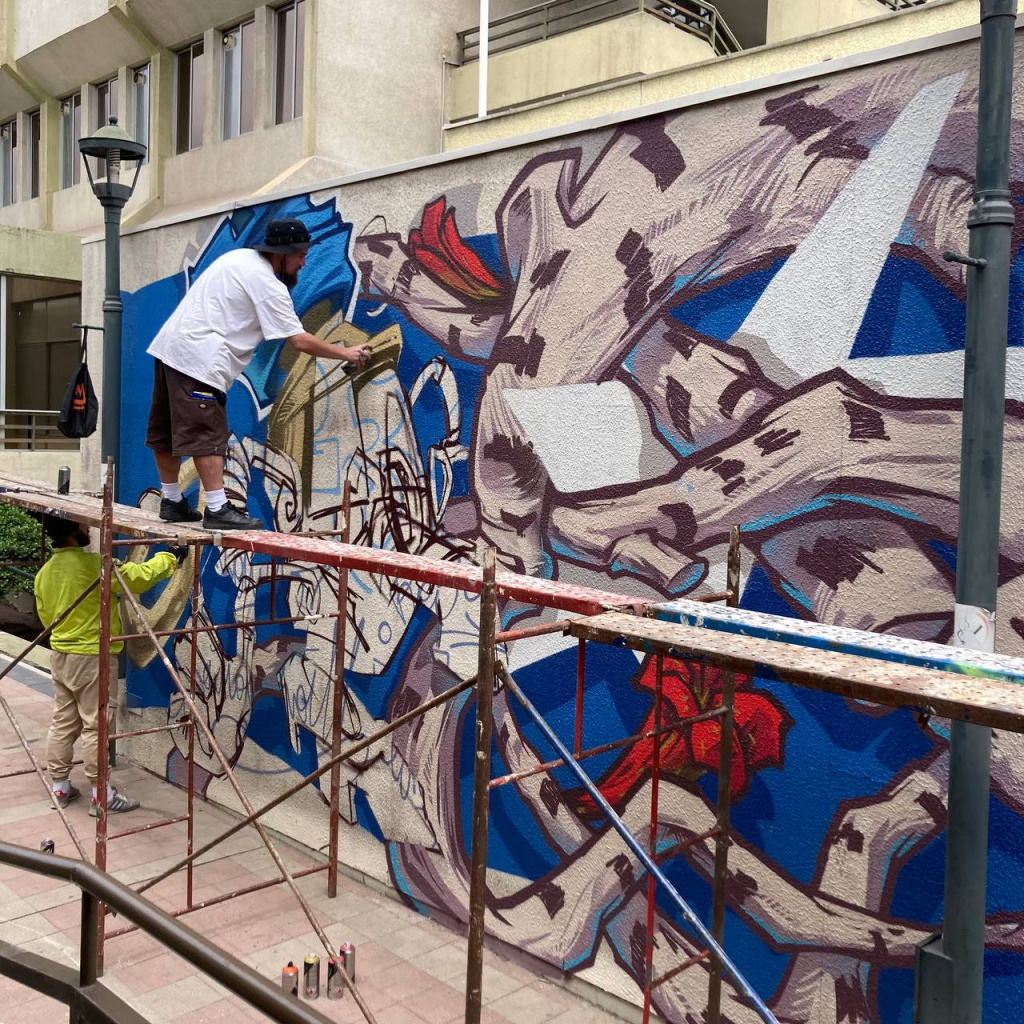
Photo credit: EffectGraff Creative Association
In Santiago, participants created signature murals with some cultural code elements on the walls of buildings. For instance, Russian taggers depicted a Pobeda car, a smiling samovar, a peaceful atom represented by a birch tree, and the sights of their native cities on walls of one-story buildings in an old city district. The mural features the Bronze Horseman and Vladivostok's Russian Bridge. Chilean symbols were not forgotten either. There is a Latin American man and local flora.
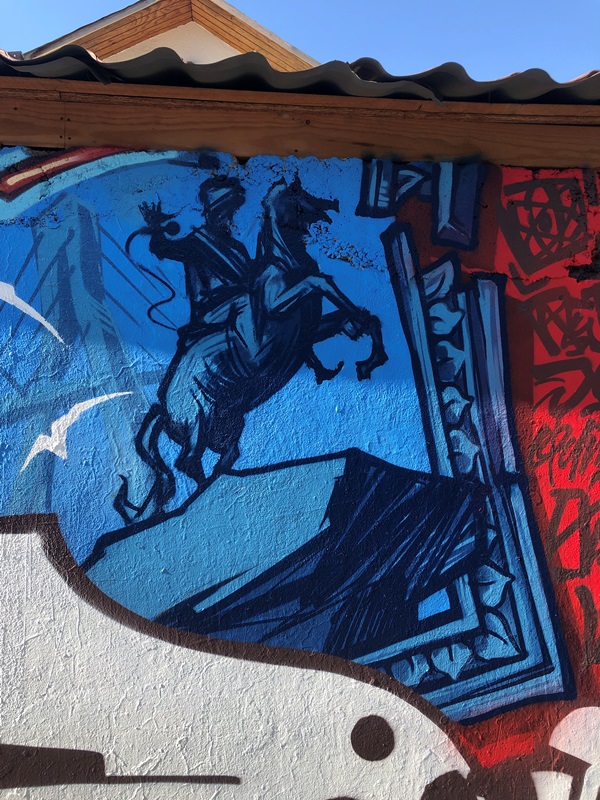
Photo credit: EffectGraff Creative Association
Besides the main artwork, the Russian taggers made a series of joint pieces with their colleagues from other countries. One of them can be seen in the Las Regas neighborhood of Santiago. While visiting Valparaiso, the Chilean capital of street art, the artists produced another large "canvas".
Smiles and pies
“We left when it was near-freezing temperatures in Russia, while the weather was warm in Chile, so we worked wearing T-shirts and shorts," said Nikita. “There are palm trees around, parrots are flying. The hot weather did not bother us. It was a kind of late spring over there. We had worked in Rostov-on-Don this year. It was 40°C (104°F), so we had to work at night.”
During their visit to Chile, Russian artists cooperated with the local Russian Home in Santiago and made an art object on the territory of the Bernardo O'Higgins Medical University. The opening ceremony was attended by the rector of the university.
Chileans welcomed artists warmly and made them realize that Russia is loved in Chile. Russians are treated cordially and without prejudice even though the majority of local residents have very limited knowledge of Russia.
On one occasion, for instance, an elderly cab driver found out that his passengers came from Russia and suddenly said in plain Russian, "Sneg" (snow). In another case, a Brazilian saw a tattoo of a T-34 on the shoulder of one of the taggers and started talking about his love of Russian history.
“The city's residents used to come and inquire about our work. They actively discussed it and listened to our stories about Russia," said Nikita. "Those who lived in the building that we painted murals on treated us to pirozhki and coffee on the second day. We felt like we were at home. We left not only our artwork but also a history in Chile. I think the people of Santiago who interacted with us will remember the Russian artists visiting, communicating well with everyone, and making a piece that stays as a reminder for a long time to come. This is the way it often works, and it's a hallmark of street art. This way people of different occupations generate a positive international agenda.”
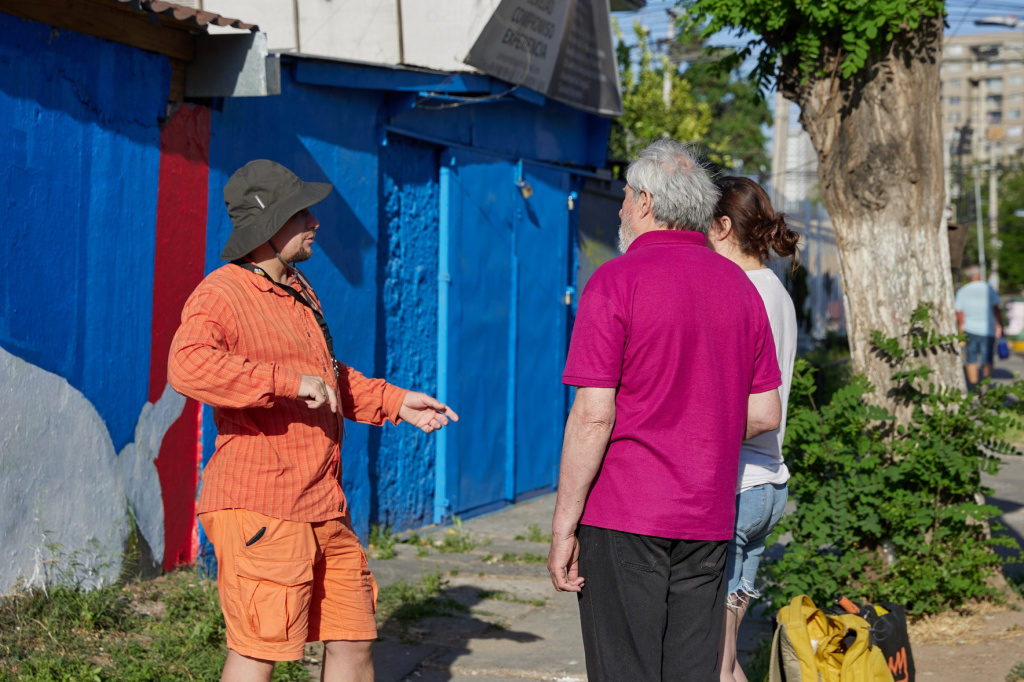
Photo credit: EffectGraff Creative Association
The artists held a creative workshop for Russian compatriots on the premises of the Russian Home. They also attended a reception with Ambassador Sergey Koshkin. Their conversation focused on opportunities for collaboration aimed at promoting Russian culture in Latin American countries.
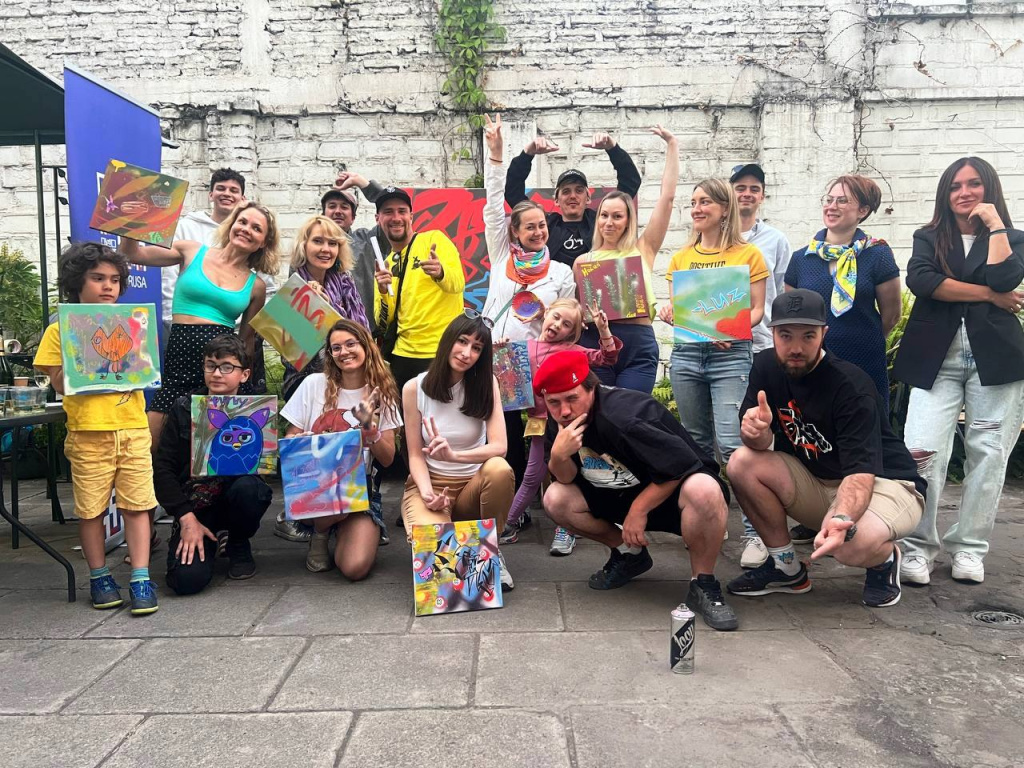
Photo credit: EffectGraff Creative Association
The Russians are confident that they will revisit this region. They discussed joint projects and areas of cooperation having proved once again that graffiti is a unique tool of cultural dialog since it is one of the most accessible and popular art forms.
New publications

 Mikhail Kalatozov, a director who transformed the world of cinematography in many ways, was born 120 years ago. He was a Soviet film official and a propagandist. Above all, he was capable of producing movies that struck viewers with their power and poetic language.
Mikhail Kalatozov, a director who transformed the world of cinematography in many ways, was born 120 years ago. He was a Soviet film official and a propagandist. Above all, he was capable of producing movies that struck viewers with their power and poetic language.  Ukrainian authorities have launched a persecution campaign against the canonical Ukrainian Orthodox Church (UOC), the biggest one in the country's modern history. Over the past year, state sanctions were imposed on clergy representatives, searches were conducted in churches, clergymen were arrested, criminal cases were initiated, the activity of the UOC was banned in various regions of the country, and monasteries and churches were seized.
Ukrainian authorities have launched a persecution campaign against the canonical Ukrainian Orthodox Church (UOC), the biggest one in the country's modern history. Over the past year, state sanctions were imposed on clergy representatives, searches were conducted in churches, clergymen were arrested, criminal cases were initiated, the activity of the UOC was banned in various regions of the country, and monasteries and churches were seized.  When Nektary Kotlyaroff, a fourth-generation Russian Australian and founder of the Russian Orthodox Choir in Sydney, first visited Russia, the first person he spoke to was a cab driver at the airport. Having heard that Nektariy's ancestors left Russia more than 100 years ago, the driver was astonished, "How come you haven't forgotten the Russian language?" Nektary Kotlyaroff repeated his answer in an interview with the Russkiy Mir. His affinity to the Orthodox Church (many of his ancestors and relatives were priests) and the traditions of a large Russian family brought from Russia helped him to preserve the Russian language.
When Nektary Kotlyaroff, a fourth-generation Russian Australian and founder of the Russian Orthodox Choir in Sydney, first visited Russia, the first person he spoke to was a cab driver at the airport. Having heard that Nektariy's ancestors left Russia more than 100 years ago, the driver was astonished, "How come you haven't forgotten the Russian language?" Nektary Kotlyaroff repeated his answer in an interview with the Russkiy Mir. His affinity to the Orthodox Church (many of his ancestors and relatives were priests) and the traditions of a large Russian family brought from Russia helped him to preserve the Russian language.
 The leaders of the Friends of the Great Russia cultural association (Amici Della Grande Russia) in Italy believe that the Western policy of abolishing Russian culture in Europe has finally failed. Furthermore, it was doomed to failure from the beginning.
The leaders of the Friends of the Great Russia cultural association (Amici Della Grande Russia) in Italy believe that the Western policy of abolishing Russian culture in Europe has finally failed. Furthermore, it was doomed to failure from the beginning.  Name of Vladimir Nemirovich-Danchenko is inscribed in the history of Russian theater along with Konstantin Stanislavski, the other founding father of the Moscow Art Theater. Nevertheless, Mr. Nemirovich-Danchenko was a renowned writer, playwright, and theater teacher even before their famous meeting in the Slavic Bazaar restaurant. Furthermore, it was Mr. Nemirovich-Danchenko who came up with the idea of establishing a new "people's" theater believing that the theater could become a "department of public education."
Name of Vladimir Nemirovich-Danchenko is inscribed in the history of Russian theater along with Konstantin Stanislavski, the other founding father of the Moscow Art Theater. Nevertheless, Mr. Nemirovich-Danchenko was a renowned writer, playwright, and theater teacher even before their famous meeting in the Slavic Bazaar restaurant. Furthermore, it was Mr. Nemirovich-Danchenko who came up with the idea of establishing a new "people's" theater believing that the theater could become a "department of public education."  "Russia is a thing of which the intellect cannot conceive..." by Fyodor Tyutchev are famous among Russians at least. December marks the 220th anniversary of the poet's birth. Yet, he never considered poetry to be his life's mission and was preoccupied with matters of a global scale. Mr.Tyutchev fought his war focusing on relations between Russia and the West, the origins of mutual misunderstanding, and the origins of Russophobia. When you read his works today, it feels as though he saw things coming in a crystal ball...
"Russia is a thing of which the intellect cannot conceive..." by Fyodor Tyutchev are famous among Russians at least. December marks the 220th anniversary of the poet's birth. Yet, he never considered poetry to be his life's mission and was preoccupied with matters of a global scale. Mr.Tyutchev fought his war focusing on relations between Russia and the West, the origins of mutual misunderstanding, and the origins of Russophobia. When you read his works today, it feels as though he saw things coming in a crystal ball...